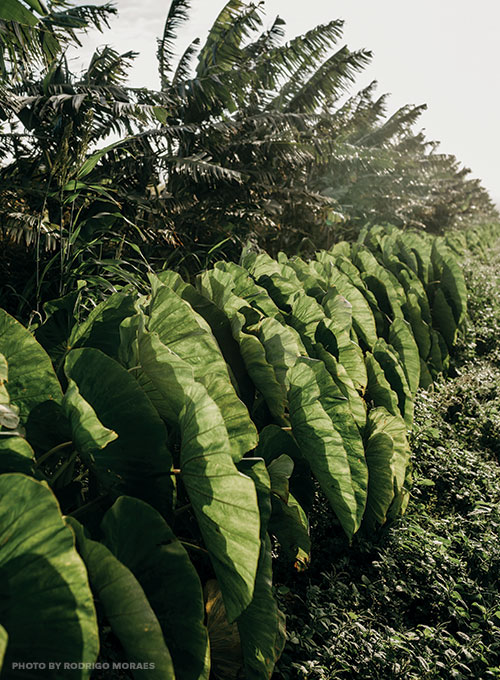
For Hawaiians, kalo is more than food—it’s identity. The Kumulipo, or Hawaiian creation chant, tells of Hāloanakalaukapalili, the stillborn son of Wākea (Sky Father) and Ho‘ohōkūkalani. From his grave grew a kalo plant, nourishing a second child to whom all Hawaiians trace their roots.
For thousands of years, kalo remained to Hawaiians what rice is to Asians, or corn to Americans. So, then, how did this former staple lose its place in the Hawaiian diet?
Scott Fisher is the associate executive director of conservation at Hawaiian Islands Land Trust, a nonprofit group that works with landowners to preserve wilderness and open spaces in perpetuity. He points to Hawai‘i’s more recent history of monocrop agriculture as a contributing factor in the decline of canoe-crop cultivation. Industrial sugarcane plantations came to Maui nearly 150 years ago, when the Civil War cut off sugar supplies from the southern states to those in the north and west. In the islands, cane planters’ demand for water, coupled with their political clout, meant that many traditional farmers saw their land dry up.
“If you look at letters that people wrote to the newspapers at that time, they weren’t just passively accepting it,” explains Fisher. “People were upset, but I think there was a general feeling that the powers that be were so entrenched that an individual [landholder] couldn’t fight it.”
He adds that perhaps the most significant reason canoe crops declined was a seismic shift in values.
“You can point to all these circumstances that led to industrial agriculture and getting away from the canoe crops, but really it took a paradigm shift: from ‘We serve the land’ to ‘The land serves us.’”
Now another transformation appears to be taking root. The Hawaiian Renaissance of the 1970s sparked a return to ancestral knowledge in every corner of the culture, including a renewed fervor for all things kalo. Today, this former staple has made its way onto store shelves as chips, desserts, and even flour for home cooking. It’s on menus as kalo burgers and toppings for açai bowls . . . and several entrepreneurs are manufacturing poi-powered baby food. There are workshops that teach students to carve their own papa ku‘i ‘ai (traditional wooden poi-pounding board) or pōhaku ku‘i ‘ai (stone poi pounder) so they can mash kalo as early Hawaiians did. At Hāna High School, the Ku‘i Club meets weekly to pound kalo on papa ku‘i ‘ai.





